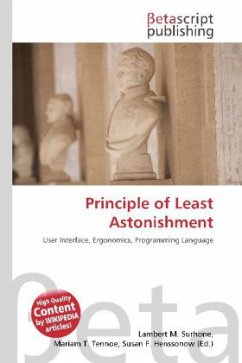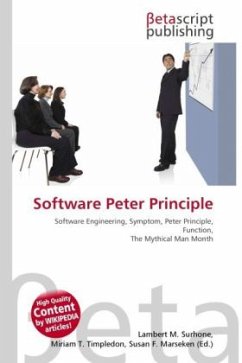
Principle of Least Astonishment
Versandkostenfrei!
Versandfertig in 6-10 Tagen
19,99 €
inkl. MwSt.

PAYBACK Punkte
10 °P sammeln!
Please note that the content of this book primarily consists of articles available from Wikipedia or other free sources online. The principle (or rule or law) of least astonishment (or surprise), often abbreviated to POLA, applies to user interface design, programming language design, and ergonomics. It states that, when two elements of an interface conflict, or are ambiguous, the behaviour should be that which will least surprise the human user or programmer at the time the conflict arises. For example: A user interface may have the behaviour that pressing Control-Q causes the program to quit...
Please note that the content of this book primarily consists of articles available from Wikipedia or other free sources online. The principle (or rule or law) of least astonishment (or surprise), often abbreviated to POLA, applies to user interface design, programming language design, and ergonomics. It states that, when two elements of an interface conflict, or are ambiguous, the behaviour should be that which will least surprise the human user or programmer at the time the conflict arises. For example: A user interface may have the behaviour that pressing Control-Q causes the program to quit. The same user interface may have a facility for recording macros, a sequence of keystrokes to be played back later, intended to be able to control all aspects of the program. The user may want to record a keystroke sequence that includes Control-Q as part (most likely the last part) of the macro. The principle says that pressing Control-Q while recording a macro should not quit the program(which would surprise the user), but rather should record the keystroke.












